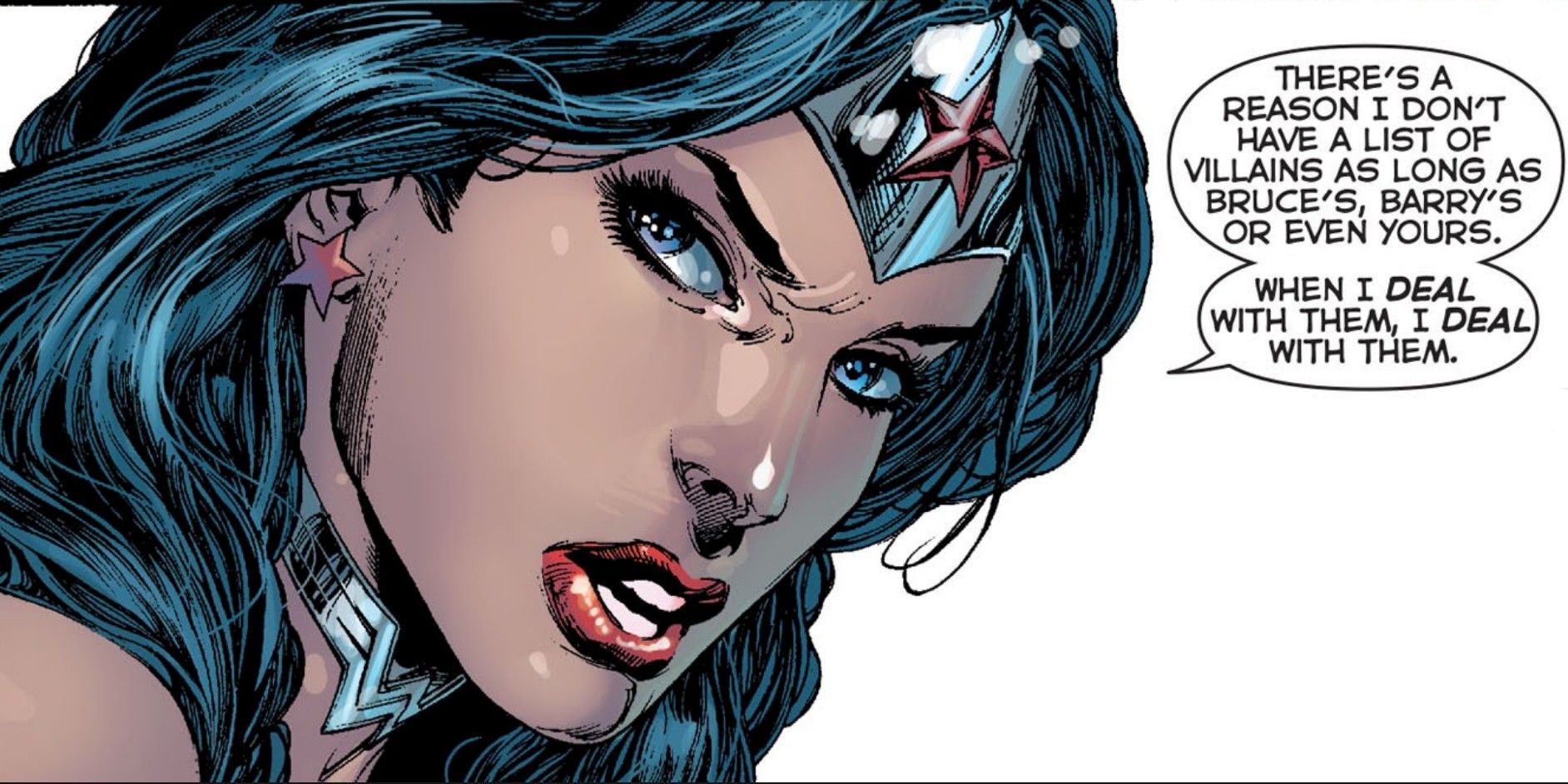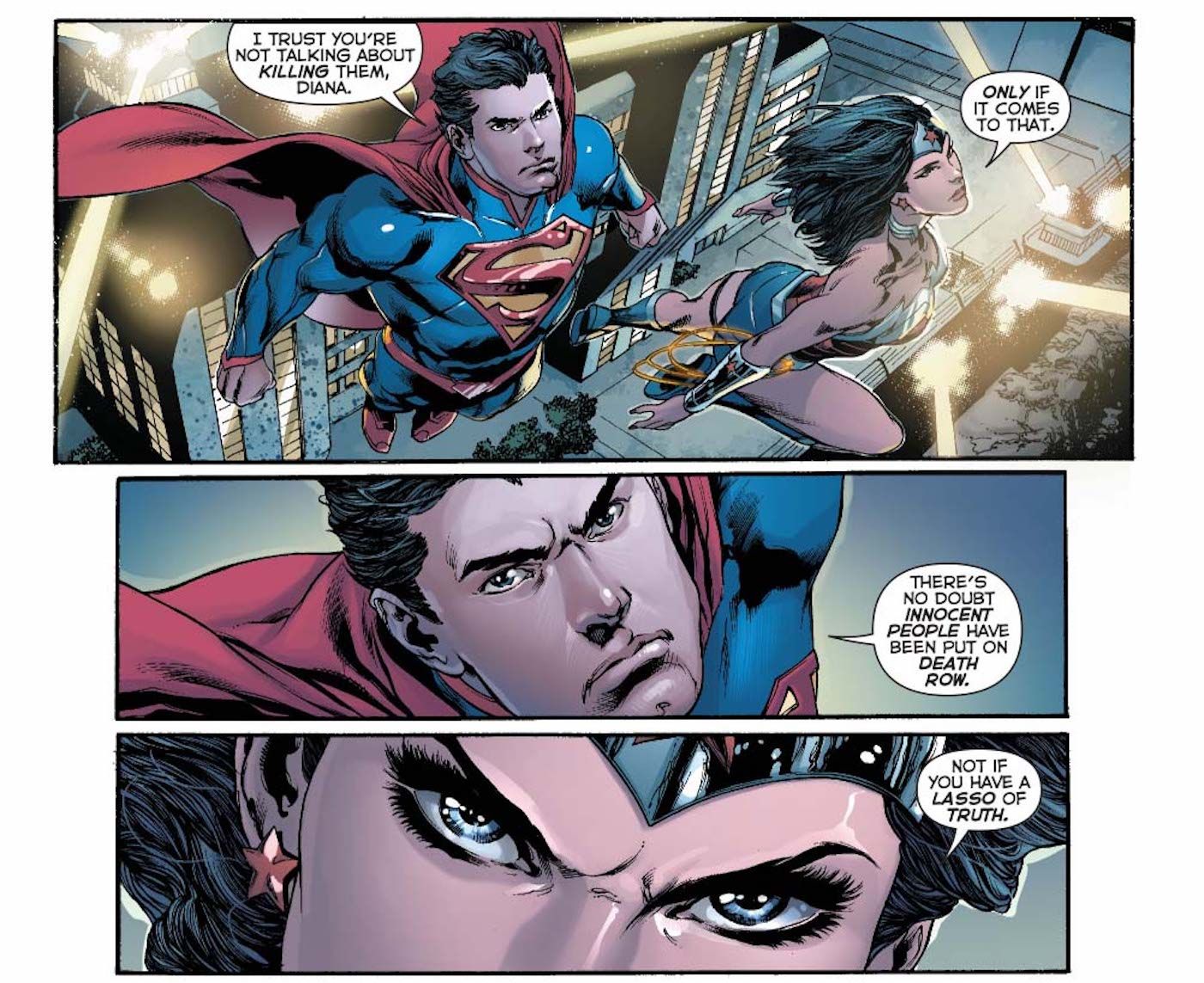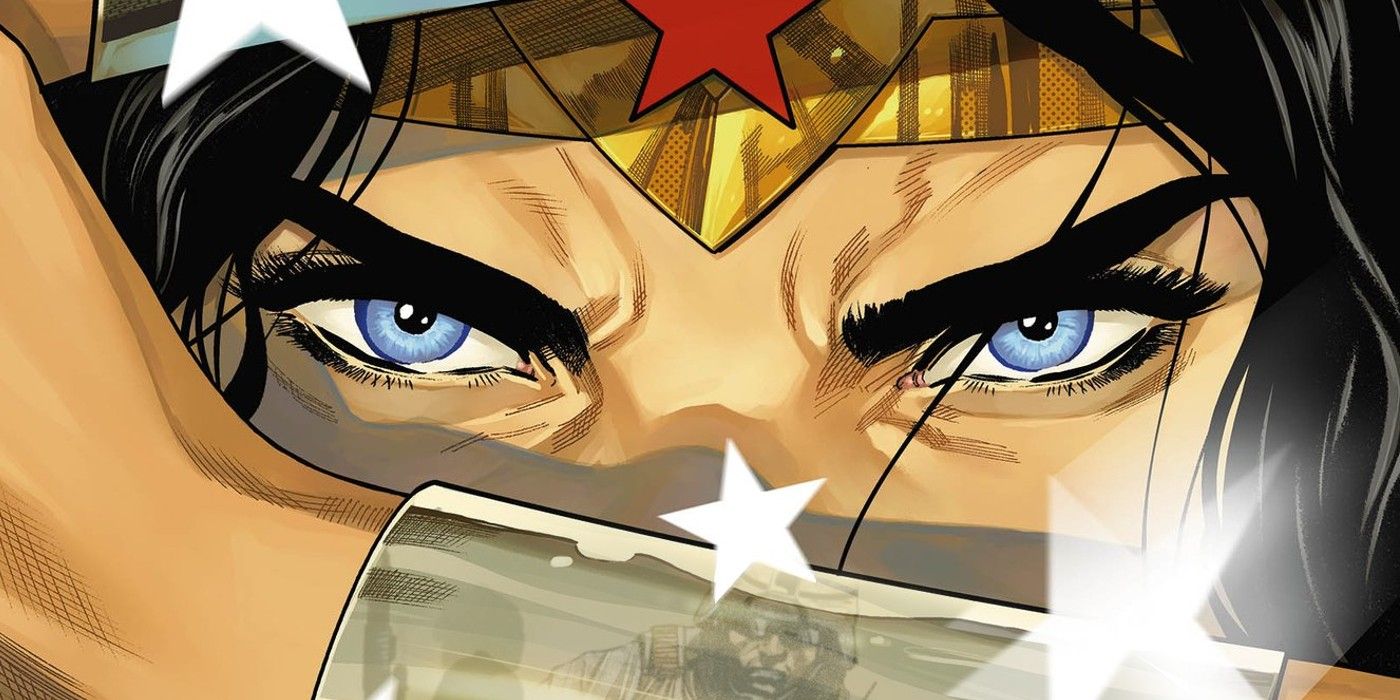While Wonder Woman is commonly depicted as DC’s hard-hitting warrior with an immaculate sense of compassion, there’s a limit to the traditional wholesomeness she usually brings to a fight. After centuries of fighting on the frontline to protect the values of truth and justice, she’s more than willing to end a fight — permanently.
The limits of Wonder Woman’s tolerance are on display in Justice League #22 by Geoff Johns, Ivan Reis, Oclair Albert, Joe Prado, and Rod Reis, in which the Justice League, Justice League America, and Justice League Dark battle for possession of Pandora’s Box and for the possibility of permanently eliminating evil from human civilization. As she and Superman contemplate the dangers of Pandora’s box, Wonder Woman confesses that her patience with the most heinous criminals only goes so far.

Wonder Woman implies that, if it would save lives, she has no problem killing a villain: “When I deal with the, I deal with them.” When Superman counters that there are plenty of innocent people on Death Row, Wonder Woman points out that determining who’s truly guilty is not a problem for a person with a magic lasso of truth.
Wonder Woman’s Practicality Is Essential to Her Character

The traditional Wonder Woman stereotype is that she is strong-but-feminine, powerful-but-gracious, and skilled-but-innocent. It’s a stereotype that says while she might be Amazonian, she’s the kinder, gentler version that can easily integrate into human society. Although Wonder Woman might embody aspects of all these characteristics, the fact is she is a warrior first and foremost. Put another way: she was breaking legs and snapping arms long before she became a superhero, and in those Amazonian battles, survival most likely meant killing your opponent. That is to say, Wonder Woman has always had a dark side — she’s just learned to control it.
A survey of DC history offer numerous examples that corroborate Wonder Woman’s dark side. In Wonder Woman #5 by Len Wein, George Pérez, Bruce D. Patterson, Tatjana Wood, and John Costanza, Diana uses her tiara to decapitate Deimos, the Son of Ares, after concluding it was that only way to stop the world from plunging into war. Then, in Wonder Woman #163 by Ben Raab, Derec Aucion, Tom Simmons, Jamison, and Costanza, Diana again puts down the child of a god: Poseidon’s son Triton, who hired Black Manta to kill a boatload of Diana’s fans. Finally, in her most brutal execution to date, Diana snaps the neck of Max Lord to stop him from controlling the mind (and body) of Superman in Wonder Woman #219 by Greg Rucka, Rags Morales, Tom Derenick, David López, Georges Jeanty, Karl Kerschl, Dexter Vines, Bit, Bob Petrecca, Mark Propst, Richard Horie, Tanya Horie, and Todd Klein.
Wonder Woman: Sometimes Putting Down a Villain Is Justice

Like her superhero colleagues, Wonder Woman believes in the rule of law and that their role as heroes is to stop, arrest, and capture criminals so that their guilt can be determined in a court of law. Beyond that, however, for those criminals whose abilities are so powerful that they must remain outside the normal criminal justice system, Wonder Woman has her own means of dealing with them — permanently. While some may consider this her dark side, she sees it as her duty as a hero and a leader.
Justice League #22 and the noted issues of Wonder Woman are now available from DC Comics.




